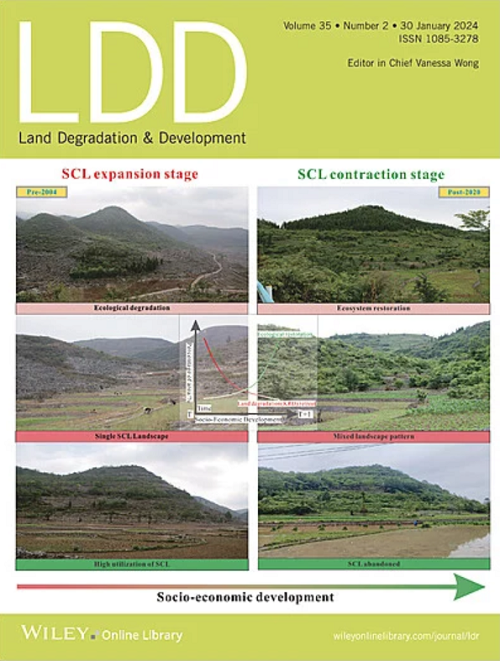土地融资驱动下的中国城市失衡:可持续资源管理的挑战
IF 3.7
2区 农林科学
Q2 ENVIRONMENTAL SCIENCES
引用次数: 0
摘要
中国快速城市化进程的特点是土地城市化与人口城市化的明显不匹配。本文从新的角度分析了这种差异的根本原因,认为地方政府对土地融资的依赖是一个关键因素。本文构建了一个理论框架,探讨土地财政对城市化失衡的直接途径和间接机制。基于2000 - 2017年中国31个省级地区的面板数据,利用中介效应模型对该框架进行了实证验证。研究结果表明,土地融资直接促进了城市地区的物理扩张,导致空间增长超过了人口变化。土地融资通过土地扩张渠道、人口吸引渠道和人口迁移渠道三个主要渠道间接改变了国内人口迁移模式。这些渠道还受到城市服务提供、城乡收入差距和城市住房成本上升等变量的进一步影响。此外,本文还区分了两种土地融资方式的后果:土地转让融资(LCF)和土地债务融资(LDF)。研究结果表明,虽然LCF在推动城市增长方面发挥了重要作用,但它加剧了收入不平等;与此相反,LDF提高了房价,阻碍了服务效率,并对城市化的不平衡表现出延迟效应。本研究强调了与过度依赖以土地为中心的融资相关的系统性风险,并强调了改革中国城市发展模式的紧迫性。鼓励建立更可持续的土地融资机制,对于实现协调的城市化、减少不平等以及保障长期的环境和资源安全至关重要。本文章由计算机程序翻译,如有差异,请以英文原文为准。
Urban Imbalance in China Driven by Land‐Based Financing: Challenges for Sustainable Resource Management
China's rapid urbanization process has been characterized by a pronounced mismatch between land urbanization and population urbanization. This paper provides a new perspective on the root causes of this divergence, identifying local government reliance on land‐based financing as a pivotal factor. A theoretical framework is constructed to explore both the direct pathways and indirect mechanisms through which land financing contributes to this urbanization disequilibrium. Based on panel data from 31 provincial‐level regions across China from 2000 to 2017, the study empirically validates the framework using a mediating effect model. The findings indicate that land financing directly promotes the physical expansion of urban areas, resulting in spatial growth that outpaces demographic changes. Indirectly, land financing alters internal migration patterns through three main channels: the land expansion channel, the population attraction channel, and the population displacement channel. These channels are further influenced by variables such as urban service provision, urban–rural income disparities, and escalating urban housing costs. Furthermore, the paper differentiates the consequences of two land financing approaches: land conveyance financing (LCF) and land debt financing (LDF). Results show that while LCF plays a strong role in driving urban growth, it exacerbates income inequality; in contrast, LDF increases housing prices, hampers service efficiency, and exhibits a delayed effect on the imbalance in urbanization. This study underlines the systemic risks linked to excessive dependence on land‐centered financing and emphasizes the urgency of reforming China's urban development model. Encouraging more sustainable land financing mechanisms is essential for achieving coordinated urbanization, reducing inequality, and safeguarding long‐term environmental and resource security.
求助全文
通过发布文献求助,成功后即可免费获取论文全文。
去求助
来源期刊

Land Degradation & Development
农林科学-环境科学
CiteScore
7.70
自引率
8.50%
发文量
379
审稿时长
5.5 months
期刊介绍:
Land Degradation & Development is an international journal which seeks to promote rational study of the recognition, monitoring, control and rehabilitation of degradation in terrestrial environments. The journal focuses on:
- what land degradation is;
- what causes land degradation;
- the impacts of land degradation
- the scale of land degradation;
- the history, current status or future trends of land degradation;
- avoidance, mitigation and control of land degradation;
- remedial actions to rehabilitate or restore degraded land;
- sustainable land management.
 求助内容:
求助内容: 应助结果提醒方式:
应助结果提醒方式:


